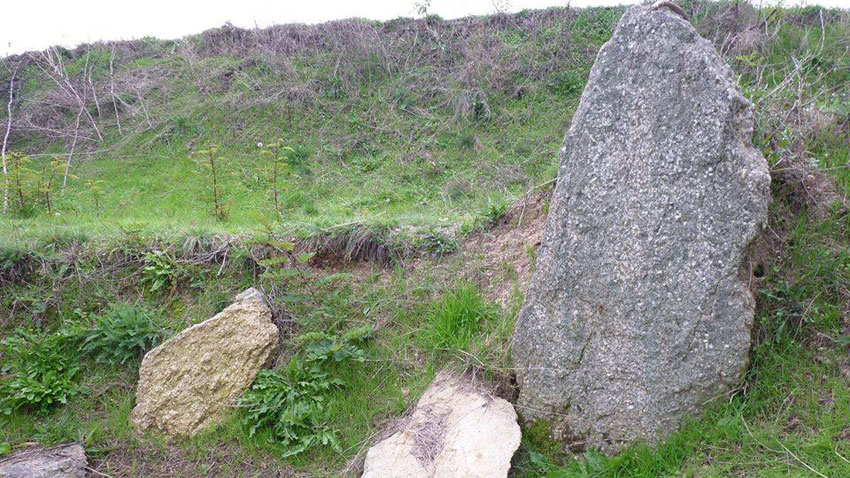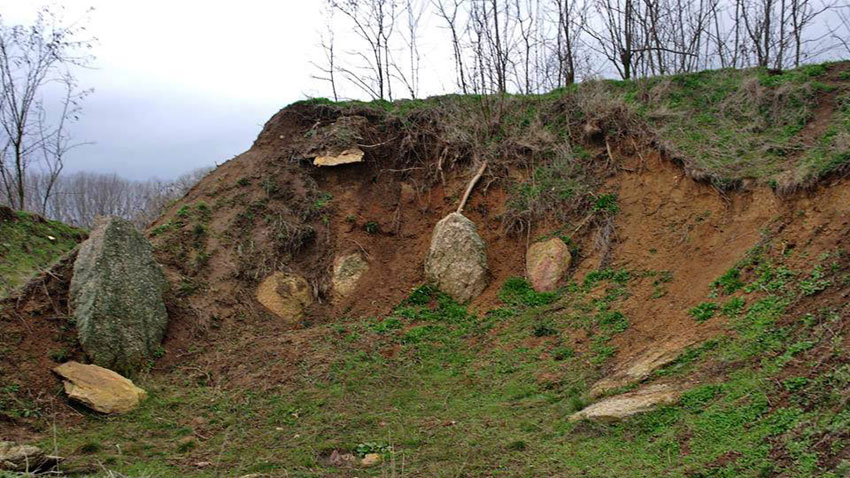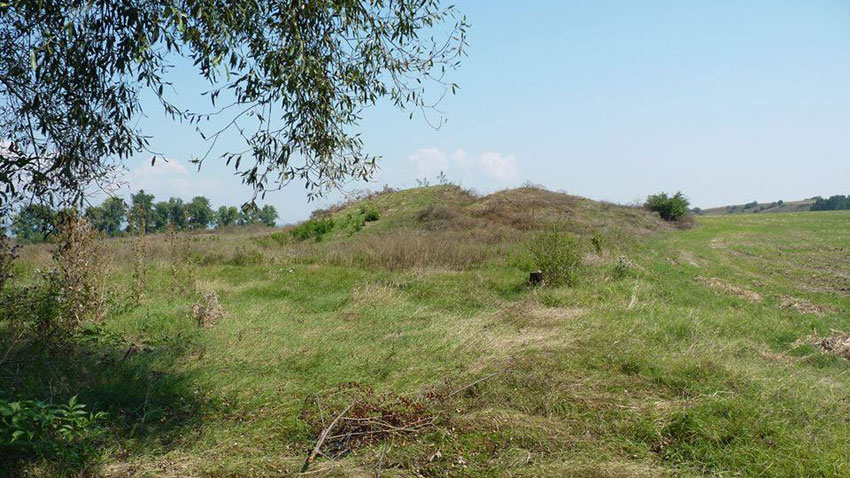The Thracian sanctuary near the village of Staro Zhelezare (Hisarya Municipality) sinks into oblivion, a civil association formed to save that valuable archeological site alarms. An exhibition of photos tracing the destiny of that site from its discovery in 2004 until now was unveiled in Bulgaria’s capital Sofia at their initiative. Why that exhibition was named The Banished Spirit of the Thracians. Lawyer Alexandra Delova who is a co-founder of the foundation Save the Cromlech in Staro Zhelezare told Radio Bulgaria details:
 “Our idea was born in 2014. Most people taking part in the foundation are friends. We are interested in topics related to the preservation of the megalithic monuments in Bulgaria, as well as in issues connected with archaeology. We accidentally came across photos from the unveiling of that interesting archeological site. His founder renowned Bulgarian archeologist Dr. Georgi Kitov described that mound facility as a monument that was once used for astronomical observations and researches. The cromlech (stone circle) near Staro Zhelezare is a stone ring consisting of 22 stone blocks stacked tightly one next to another. Its circumference is 21 meters long and it has a diameter of 7 meters. The lowest stones are 90 centimeters high and are situated at the southern side of the monument. Their height gradually increases to 1.20, 1.60, 1.80, 2.30 and 2.80 meters. Stones of the same height were placed in all four sides of the monument to mark the four directions - east, west, north and south. It is interesting to note that this is the only cromlech on the Balkans which is covered with a Thracian mound. The greatest mystery is why that site was buried by the Thracians themselves. The scientists suppose that the lifetime of those archeological sites was over, which means that the cromlech near Staro Zhelezare is quite ancient and dates back to the 3rd-4th millennium BC. There is a similar cromlech in Ukraine, although it is twice smaller than the one near Staro Zhelezare. ”
“Our idea was born in 2014. Most people taking part in the foundation are friends. We are interested in topics related to the preservation of the megalithic monuments in Bulgaria, as well as in issues connected with archaeology. We accidentally came across photos from the unveiling of that interesting archeological site. His founder renowned Bulgarian archeologist Dr. Georgi Kitov described that mound facility as a monument that was once used for astronomical observations and researches. The cromlech (stone circle) near Staro Zhelezare is a stone ring consisting of 22 stone blocks stacked tightly one next to another. Its circumference is 21 meters long and it has a diameter of 7 meters. The lowest stones are 90 centimeters high and are situated at the southern side of the monument. Their height gradually increases to 1.20, 1.60, 1.80, 2.30 and 2.80 meters. Stones of the same height were placed in all four sides of the monument to mark the four directions - east, west, north and south. It is interesting to note that this is the only cromlech on the Balkans which is covered with a Thracian mound. The greatest mystery is why that site was buried by the Thracians themselves. The scientists suppose that the lifetime of those archeological sites was over, which means that the cromlech near Staro Zhelezare is quite ancient and dates back to the 3rd-4th millennium BC. There is a similar cromlech in Ukraine, although it is twice smaller than the one near Staro Zhelezare. ”

That archeological find was expected to turn into a scientific sensation 13 years ago. However, that period has been marked with a systematic demolition of the monument only. Despite the huge efforts and desire of the civil association to save the archeological find from destruction and the funds raised through several charity campaigns, the site now is facing complete annihilation. No official answer has been sent to the three letters written to the competent institutions that may allow the future research, restoration and conservation of the megalithic monument.
The Banished Spirit of the Thracians exhibition provoked a public discussion about the fate of that archeological heritage, since scientists already started excavations there. This case is quite paradoxical, because there are volunteers who want to put all their positive energy and labor, in order to save an archeological monument. However, their efforts are so far in vain, archeologist Professor Diana Gergova notes. In her view, the civil associations are the necessary corrective for the solution of the multiple problems accumulated in this country.

This issue is very paradoxical, because we have not asked the state for any financing. We have solved all legal issues and all we have to do is to complete the research and make a good project aimed at its preservation, lawyer Alexandra Delova explains and adds:
“The mound near Staro Zhelezare was discovered 13 years ago. Some temporary efforts aimed at preserving the archeological site have been also made. In the beginning the excavations were covered with wooden boards and nylon which were easily destroyed by the wind and the rain. Later, the monument was left to the destructive forces of the natural conditions and phenomena. The soil has been sliding down towards the stone rocks. Now that place is impassable, due to the thick bushes and grass that grew around. Currently only one huge granite stone of that stone circle can be seen. All we ask the state institutions for is to allow us to continue the excavations and build a protective coating. The monument is in a private property. We even found the owners and got documents with their consent to continue the research activities at the Thracian mound near the village of Staro Zhelezare.”
English version: Kostadin Atanasov
In 2024, the National History Museum sent expeditions to 22 archaeological sites. More than 1,400 artifacts were found during the season spanning the period from prehistoric times down to the Middle Ages. The most significant of these discoveries are..
From 31 January 2025, the first podcast about Bulgarian Orthodox communities abroad - Bridge of Faith - will be launched. The concept is the brainchild of the team of the Bulgarian National Radio's (BNR) overseas programme - Radio Bulgaria, and is being..
It is 131 years since the birth of Tsar Boris III, dubbed unifier. Boris Saxe-Coburg-Gotha found himself at the head of Bulgaria after the abdication of Tsar Ferdinand after the defeat of the country in World War I. The young monarch was crowned..
After nearly 35 years, the Bulgarian Orthodox Church Community in London has its own church in the central part of the British capital, in close proximity..

+359 2 9336 661
